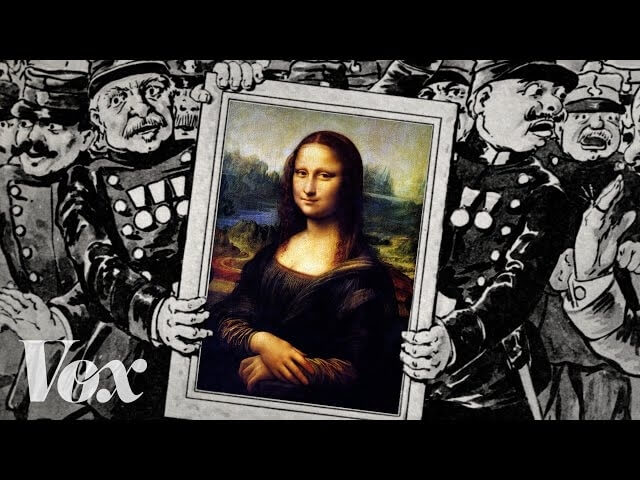Theft and publicity made the Mona Lisa the world’s most famous painting

With Leonardo Da Vinci’s Mona Lisa, or La Gioconda (The Joyous), approaching its 500th anniversary, it’s as good a time as any to reflect on how this relatively modest oil painting attained the vaunted cultural status it now enjoys. Half a millennium ago, the now-iconic portrait of a woman with an inscrutable expression was not considered the be-all and end-all of humankind’s artistic expression. How, exactly, did it acquire that daunting reputation? Vox has broken down the painting’s action-packed history in an episode of its Almanac series called “How The Mona Lisa Became So Overrated.” It turns out to be a combination of good publicity, widespread public ignorance, and poor museum security.
Most of the credit for transforming Mona into a masterpiece goes not to Da Vinci but to English art critic and essayist Walter Pater. It was Pater’s “over-the-top” positive review of the painting in the 1873 book The Renaissance: Studies In Art And Poetry that established La Gioconda as a work for the ages. During the Victorian era, it was difficult for most people to actually see the painting, so Pater’s florid description did the work. It’s a strange piece of writing, to be sure, one that reads like modern-day fan fiction. “Like the vampire,” Pater writes, “she has been dead many times.” It helped that the painting, unlike Da Vinci’s The Last Supper, was secular and had no preexisting narrative imposed on it, and people had more liberty to interpret the work as they chose.
The Mona Lisa’s reputation really took off in 1911, when it was stolen from The Louvre by a man named Vincenzo Peruggia, whose alleged goal was to return the painting to Italy, its country of origin. It took two years for authorities to recover Mona, and in the meantime, the frenzied press coverage of the theft was essentially the greatest publicity campaign any painting ever had. From that point on, the painting wasn’t just art-world famous; it was real-world famous. The tributes and parodies have never stopped—neither have the interpretations. The video concludes that the portrait’s fame derives not from “how she’s painted but what we see in her.” Sorry, every other painting in The Louvre.